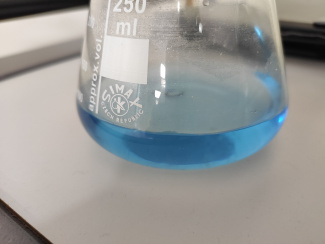CO2MUCH - Ocean Acidification

Overview
Overview
Keywords: CO2, microcontrollers, greenhouse effect, acidification
Disciplines: Physics, chemistry, science and technology
Age level of the students: 13-16
Time frame: 3-5 lessons
Partners: Other schools to compare the pH of seawater in different locations
![]()
![]()
Teachers should start by discussing the effects of the increase of carbon dioxide in the atmosphere, based on recent news, while looking at the question: why are the oceans becoming more acidic and how does that threaten biodiversity? To discuss this question, students and the teacher can watch a video on the subject.
The students and teacher discuss the video and the students are then invited to propose protocols to study the influence of CO2 on the acidity of the oceans and the impact on biodiversity. You can use the interactive video below or other videos such as Demystifying ocean acidification and biodiversity
Measuring the pH of seawater
Depending on the level of the students, the pH measurements can be made with pH indicator paper or liquid, a pH meter or by using an Arduino microcontroller.
First, seawater is collected and the students measure the pH value.
Measuring pH values for seawater can be done at different locations with students in other towns or countries.
Goal
Students collect water samples and measure the pH.
Before you start questions
- What does pH measure?
- What is the pH of pure water?
- Which instrument can be used to measure pH?
Question
What is the pH of seawater?
Hypothesis
Students will write their hypotheses and design their experiments to prove them. One possible hypothesis is 7.
Materials
- Seawater samples
- pH meter
- Beakers
Method
- Collect some seawater samples from different locations and place them in different beakers.
- Measure their pH using a pH meter.
Data
The pH values will depend on the place where you collect the water samples. In most cases they will be close to a neutral pH.
Conclusions
Seawater’s pH is not exactly 7.
Final questions
- Was your hypothesis right?
- What are the main salts dissolved in seawater?
Dissolving CO2 from combustion reactions in water and its acidification
Students carry out an experiment in which they place a water solution with bromothymol blue indicator in an Erlenmeyer flask. A wooden splint is burnt inside the Erlenmeyer flask and carbon dioxide will be released. After a few minutes (not immediately) the colour of the indicator will change due to the acidification of the water.
Goal
Students study the effects of carbon dioxide in water.
Before you start questions
- In general, are gases soluble in water?
- What is the pH of pure water?
- What is an indicator?
Question to investigate
How does carbon dioxide affect the pH of water?
Hypothesis
Students will write their hypotheses.
Materials
- 2 Erlenmeyer flasks with a stopper
- Bromothymol blue or red cabbage indicator
- Water
- Wooden splint
Method
- Place 200 mL of water in each Erlenmeyer flask with an indicator (either red cabbage juice or bromothymol blue work well for this experiment).
- In one of the Erlenmeyer flasks, burn a wooden splint.
- Very quickly put the stopper in the flask where you burnt the wooden splint, shake it and wait for a while. The outcome can be seen in the images below.
Observations
The indicator will change colour in the Erlenmeyer flask where carbon dioxide was produced.
Conclusions
Carbon dioxide reacts with water creating carbonic acid which decreases the water’s pH value.
Final questions
- Is the process observed in this experiment physical or chemical? How do you know?
- Write and balance the chemical equation that takes place when you introduce carbon dioxide in the solution.
- What is the colour of the indicator at the beginning of the experiment?
- What is the colour of the indicator at the end of the experiment?
Modelling acidification of the ocean
Depending on the level of the students, the chemical equation modelling the acidification of water can be studied.

Water with indicator before the experiment

Water with indicator after the experiment
CO2 and the consequences of the pH value of oceans for marine life
The students will measure the evolution of the mass of mussel shells in contact with solutions of different pH values.
The students prepare four solutions of different pH values. They add the same mass of shells to each solution. Six weeks later, the shells are taken and weighed.
The analysis shows that the loss of mass of the shells is greater when the pH is lower.
Goal
The students will measure the development of the mass of mussel shells in contact with solutions of different pH.
Equipment per group
- Seawater
- Mussel shells
- 4 beakers
- Digital precision scale
- Acetic acid 0.1 mol/L
- Sodium hydroxide 0.1 mol/L
- Pasteur pipette or dropper
- pH meter
Protocol
- Prepare acidified seawater solutions
Add the same volume of water to each of the 4 beakers.
Measure the pH of each solution and add acetic acid to obtain the desired pH. - Place 2 grams of mussel shells in each beaker containing the seawater solutions.
- Cover the beaker and store for six weeks.
- After six weeks, remove the water from the beakers. Dry the cells in a drying oven. Measure the mass on a digital precision scale.
- Analyse the data.
ph values of the prepared solutions:
|
Solution |
1 |
2 |
3 |
4 |
|
pH |
7.1 |
7.6 |
7.9 |
8.1 |
Solving the acidification problem
Students can experiment using calcium carbonate as a buffer solution for seawater.
Goal
Students come up with ideas to solve the ocean’s water acidification problem.
Questions before you start
- What causes the acidification of the oceans?
- Write out the chemical equation that occurs when carbon dioxide is absorbed by ocean water.
- What is the pH of pure water?
- How can you tell if the pH is acidic or basic?
- How can pH be measured?
Questions
What can be done to avoid the acidification of water when carbon dioxide is absorbed by the ocean? Can a carbonate salt added to water help prevent the acidification of water?
Hypothesis
Students will write their hypotheses and design their experiments to prove them.
One possible experiment could be adding smashed marine shells to act as a buffer solution.
Materials
- Mussel shells
- Red cabbage juice or bromothymol blue indicator or pH meter
- 2 Erlenmeyer flasks with stoppers
- Wooden splint
- Water
Procedure
- Collect some mussel shells and smash them into very small pieces.
- Add 200 mL of water solution with red cabbage or bromothymol blue indicator in two Erlenmeyer flasks.
- Measure the pH of both Erlenmeyer flasks.
- Add a tablespoon of mussel shells in one of the flasks.
- Burn a wooden stick in each flask for the same amount of time and close it as fast as possible using the stopper.
- Shake the flasks and wait several minutes to observe any changes. See the image below, where the blue colour of the red cabbage solution shows a neutral pH using the shells and the pink colour shows an acid solution after burning the wooden splint.
Please notice that you can also use a pH meter to measure the values.

Conclusions
The colour of the indicator shows that the calcium carbonate helps to keep the water’s pH almost constant after a combustion reaction is carried out.
Final questions
- How does the indicator work in this experiment?
- What are the different colours of the indicator and what type of pH are they showing?
- What other sources of calcium carbonate can be used?
Conclusion
The students can confirm that carbon dioxide is responsible for the acidification of the oceans, which threatens biodiversity. Students can create a mind map of the knowledge acquired during these different activities.
Authors of CO2MUCH - Think Global, Act Local: Elena Poncela Blanco (ES), Philippe Mancini (FR)
Links to forward to your students
"Demystifying ocean acidification and biodiversity" impacts by the California Academy of Sciences www.youtube.com/watch?v=GL7qJYKzcsk
Share this page


